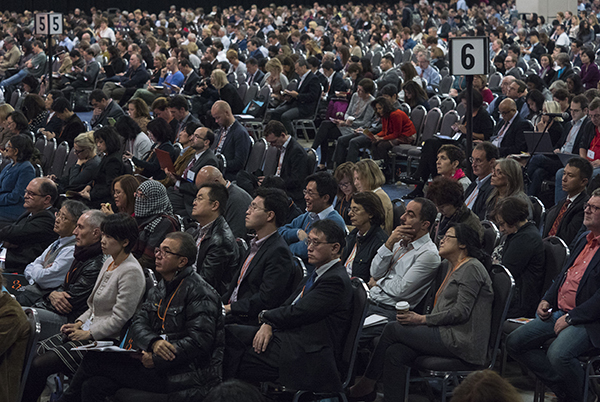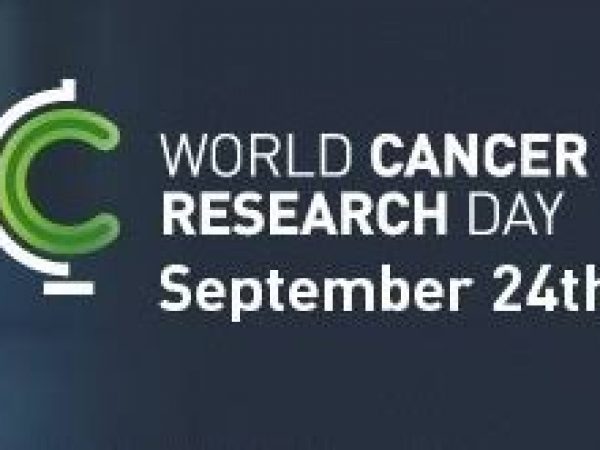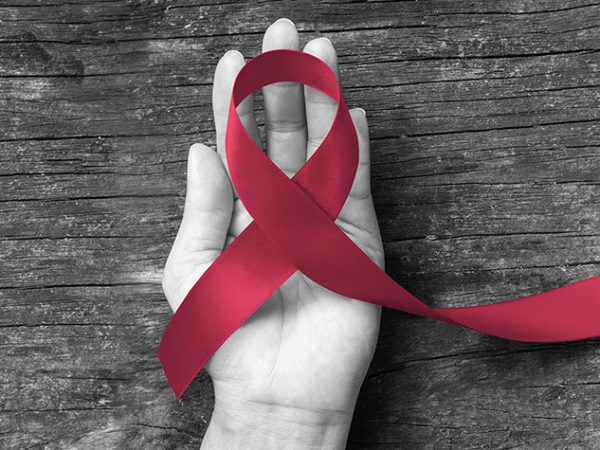SABCS 2015: Denosumab Improves Outcomes for Patients Taking Aromatase Inhibitors
Data from the phase III ABCSG-18 clinical trial, presented Dec. 9 at the San Antonio Breast Cancer Symposium, showed that denosumab, which was previously reported to reduce clinical fractures, was also effective in improving disease-free survival for postmenopausal patients with early-stage, hormone receptor (HR)-positive breast cancer receiving adjuvant aromatase inhibitor (AI) therapy.
The Austrian Breast and Colorectal Cancer Study Group-18 (ABCSG-18) trial enrolled 3,425 postmenopausal patients with early-stage, HR-positive breast cancer. In addition to adjuvant AI, roughly half of the study participants were randomly assigned to 60 milligrams of denosumab once every six months and the other half were randomly assigned placebo.
Study results showed that after a median follow-up of four years, patients assigned denosumab had an 18 percent reduced risk of their disease recurring compared with those assigned placebo.
Why add denosumab to AI therapy?
Several large clinical trials conducted in recent years have demonstrated the superiority of adjuvant AI over tamoxifen in reducing the rates of recurrence and death from breast cancer. Owing to this, nearly all postmenopausal patients with HR-positive breast cancer currently receive AI, either alone or in sequence with tamoxifen, for five to 10 years, after completing their initial post-diagnosis treatment.
Unlike tamoxifen, which has protective effects on bone, adjuvant AI therapy compromises bone health, explains Michael Gnant, MD, a professor of surgery at the Medical University of Vienna in Austria, who presented the study.

Michael Gnant, MD speaks during the first press conference at the 2015 San Antonio Breast Cancer Symposium. Photo by © MedMeetingImages/Todd Buchanan 2015.
Adjuvant AI causes bone-related side effects, including increased bone resorption (the process by which bone is broken down by cells called osteoclasts), reduction in bone mineral density and an increase in the risk of fractures. To manage this side effect, most women taking AI also take bisphosphonates, which have been shown to counteract bone-related side effects in addition to improving outcomes.
Denosumab, like bisphosphonates, is a treatment option for osteoporosis. It is a monoclonal antibody that inhibits RANKL, a protein that plays a role in bone resorption, and is approved by the U.S. Food and Drug Administration (FDA) to prevent bone-related complications in patients with bone metastasis from solid tumors.
The Independent Data Monitoring Committee (IDMC) of the ABCSG-18 trial, an independent group of experts who monitor patient safety and treatment efficacy data while a clinical trial is ongoing, recommended that an analysis be performed to study disease-free outcomes in patients receiving denosumab, in addition to analysis for the primary endpoint of the trial.
Dual benefit
The primary endpoint of the ABCSG-18 trial was to measure the time to clinical fractures in those who received denosumab versus those who received the placebo. The study results showed that patients who took denosumab had a significant delay in having a clinical fracture.
According to Gnant, the IDMC recommended unblinding this placebo-controlled trial because of the dramatic benefit in terms of fractures. “This will occur in 2016, offering eligible trial patients the option of unblinding and subsequent treatment with denosumab if it turns out that they were in the placebo group,” he says.
“Although the FDA has approved adjuvant denosumab as a treatment to increase bone mass in breast cancer patients receiving adjuvant aromatase inhibitor therapy who are at high risk for fracture, in most health care environments, adjuvant denosumab is only used for those patients with established osteoporosis,” Gnant says. “Our new data suggest that this treatment should be offered to all patients with HR-positive breast cancer who are receiving adjuvant aromatase inhibitor therapy, irrespective of their bone health status.”
Sandra Spivey has been a helpline counselor for breast cancer patients for over a decade and is living with stage IV disease. “I look forward to the overall results that the trial investigators are hoping to generate in 2019,”she says. “I’m glad that I have the opportunity to speak with breast cancer researchers and clinicians [at the symposium] and provide the face of metastatic disease for them,” she adds.
Spivey was diagnosed with breast cancer in 1998 when she was 42 and her daughter, Allison, was 12. Spivey’s mother was also diagnosed with breast cancer 12 years earlier.
One night, as Spivey tucked Allison in bed, her daughter said, “Mom, I know you have breast cancer and Granny had breast cancer. I know I’ll get it too and want you to know that it’s OK.” After that, Spivey resolved to do whatever she could so that her daughter’s generation would not have to face a breast cancer diagnosis, she says.
Spivey, who endured harsh treatments when her cancer metastasized to the bone, has lived with metastatic disease for 17 years. “I want to know about the treatments I may be eligible for in the future, as I will always be on some sort of treatment for the rest of my life,” she says. “It’s important for me to stay on top of new treatment options so I can provide updated information to helpline callers.”
This post is adapted from an article on the website of Cancer Today, a quarterly magazine for cancer patients, survivors, and caregivers published by the AACR. Read all of Cancer Today’s SABCS coverage.




